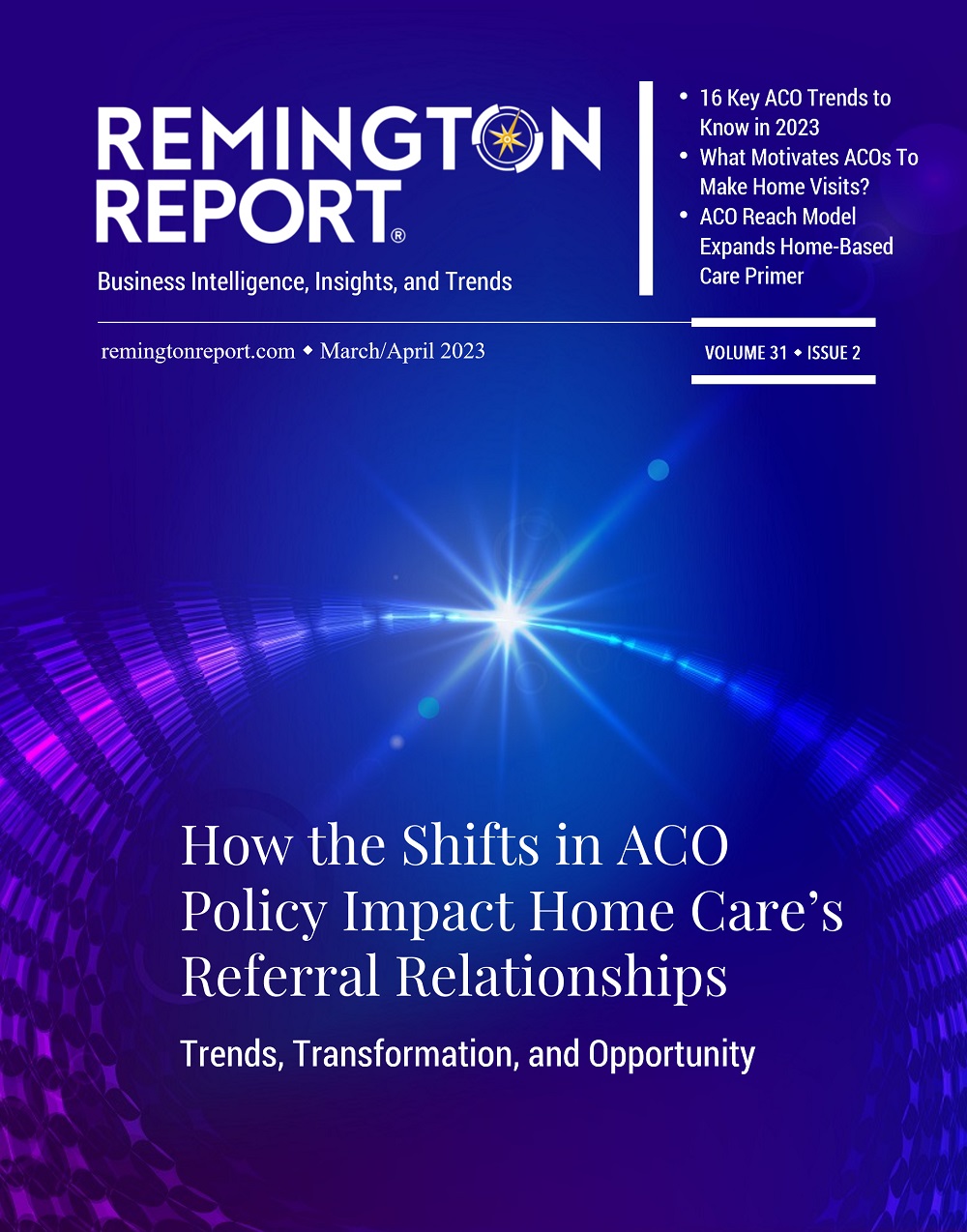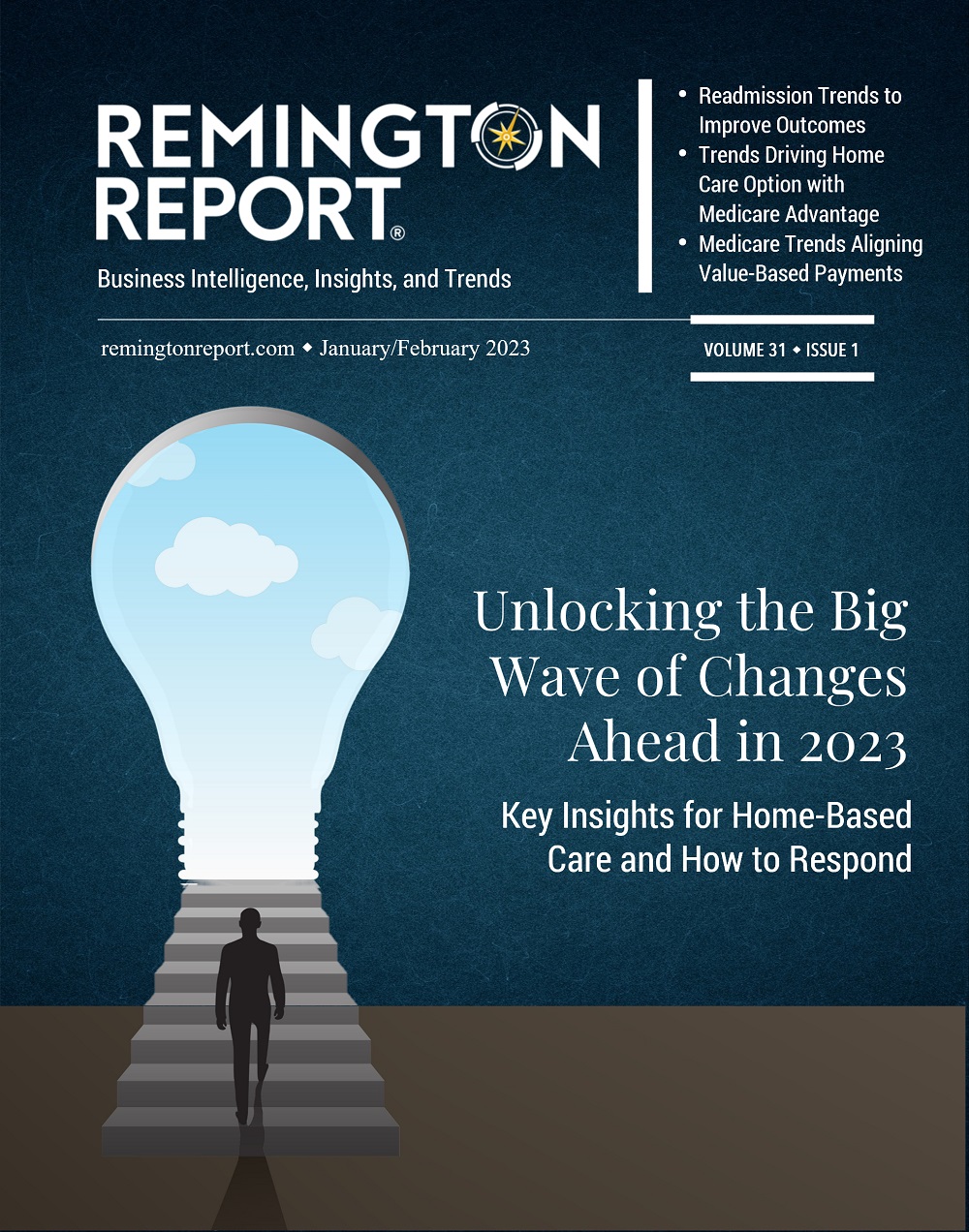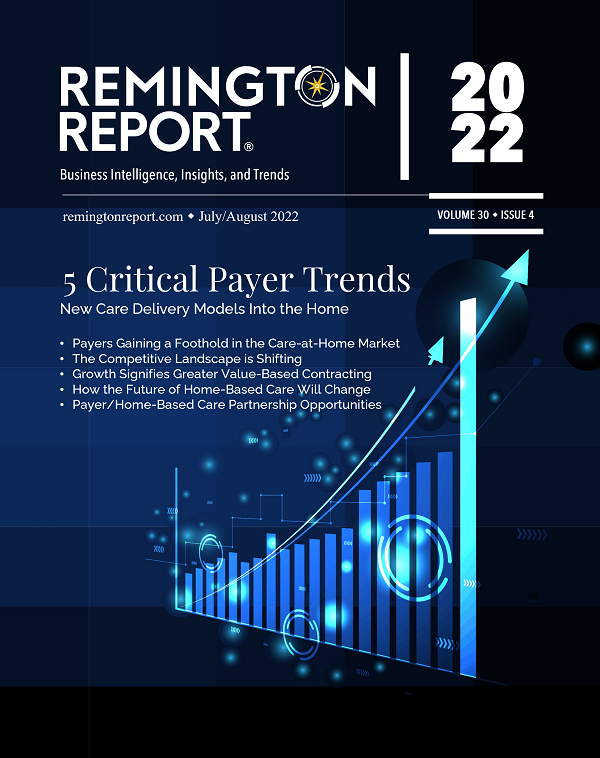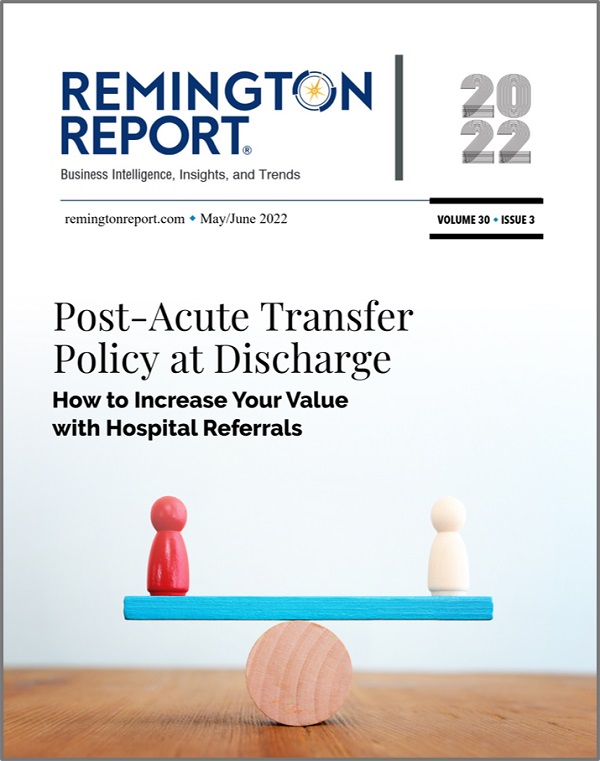INTERACTIVE FEATURES: When viewing this article on an electronic device, note that web addresses are live links. Just click the link to visit that web page.
Click for instructions for moving the PDF into Kindle, Nook, Apple iBooks, and Apple Library.
Home-based medical care models are shaking-up the $260 billion primary care market. The market drivers supporting this paradigm shift are changes to physician reimbursement, telehealth reimbursement for physician visits in the home, and the need to reduce the cost of chronic care.
Three physician home-based models have moved their way into expanding care in the home.
- Home-based primary care (HBPC) programs that provide appropriate care (primary, urgent, or palliative) to high-risk, medically vulnerable patients, often suffering multiple chronic conditions, when and where they need it.
- Integrated primary care delivery models that address chronic care management in the home. Most partner with payers in shared savings arrangements. These are interdisciplinary team-based models.
- Primary care physician groups partnering-up with insurers adding the support of telehealth and pharmacies to deliver care in the home.
Reimbursement is Shifting from Fee-for-Service to Value-Based
 Expanded physician reimbursement is shifting from fee-for-service to value-based payments providing physicians greater flexibilities. These value-based models include:
Expanded physician reimbursement is shifting from fee-for-service to value-based payments providing physicians greater flexibilities. These value-based models include:
Primary Care First – 2 Models
- Monthly reimbursement
- Incentives: reduced hospitalization and total cost of care
- Focus: outcome-based clinical measures
Primary Care First – High-Need Populations
- Higher payments for high-need populations
Direct Contracting – 3 Models
- Experienced in ACOs, MA plans, Medicaid managed care
- Testing risk-based arrangements
Direct Contracting – Global, Professional and Geographic
- Greater control of managing costs
- Focus – high-need patients
- Fixed monthly payment
In addition to reimbursement, the 2021 physician fee schedule allows Medicare providers to conduct evaluation and management home visits for established patients virtually. The reimbursement is based upon the minutes spent with a patient.
Chronic Care Management
The focus of all payers is reducing the cost of chronic care. Home-based primary care typically provides care to the most medically complex patients.
Home-based primary care is designed to increase access and improve quality of life for homebound patients and their caregivers. In addition, care and decrease healthcare costs by allowing patients to remain at home and avoid unnecessary stays in hospitals or nursing homes.
Currently, in today’s fragmented healthcare system, 5% of the country’s sickest patients use 50% of healthcare dollars. This is because the system is not set up to care for the sickest patients who are often homebound. Home-based primary care (HBPC) brings quality primary care to the most complex, costly patients in society. Bringing the care model to the patient not only makes sense, but it also improves care and lowers costs.

Lisa Remington is widely recognized as one of the foremost futurists in the home care industry, focusing on healthcare trends and disruptive innovation. She serves as the president and publisher of the Remington Report magazine and is also the President of Remington’s Think Tank Strategy Institute. Lisa provides strategic advice and education to over 10,000 organizations, assisting them in developing transformative strategies for growth and their future implications. She closely monitors complex trends and forces of change to develop effective strategic approaches.









